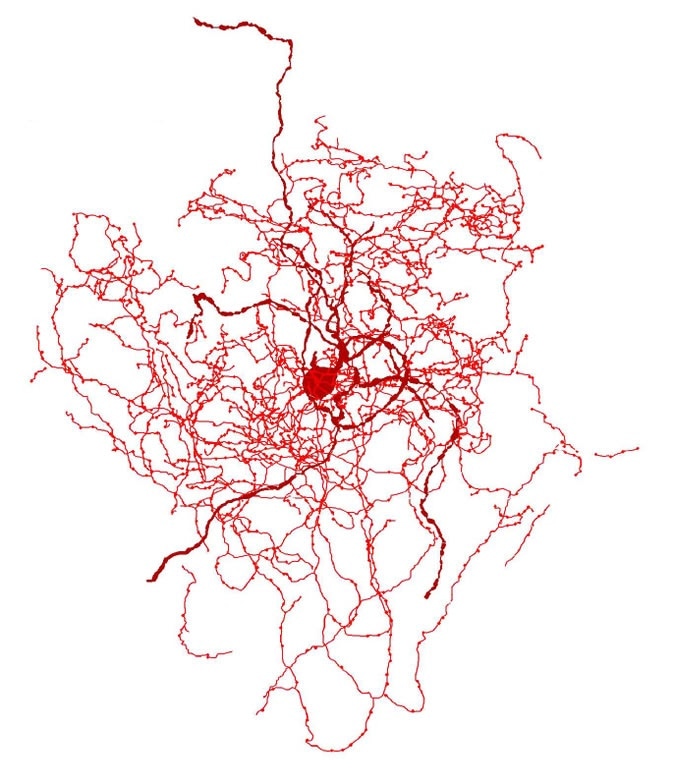Aug 27 2018
By Dr Ananya Mandal, MD
A unique type of neuron has been discovered in the human brain. It has been termed the “rose hip” neuron after the base of the rose which it resembles. This neuron is absent in mice and may provide clues about what makes the human brain unique.
The team collaborating from different institutes have published their findings in the latest issue of the journal Nature Neuroscience. According to one of the authors Ed Lein from the Allen Institute for Brain Science in Seattle, this new type of brain cell has never been described in any other species. This, he explained would clarify why some experimental neurological treatments work in laboratory mice but fail to show the same efficacy when tried on humans in human clinical trials. Scientists studying brain diseases such as dementia, Alzheimer’s disease, autism or schizophrenia would also get a more clear understanding from this finding, he said.

A reconstruction of a newly discovered type of human neuron. The researchers who identified the new cell type dubbed it a ‘rosehip neuron’ for its compact, budlike shape. Image courtesy of Boldog, et al.; Nature Neuroscience.
Joshua Gordon, director of the National Institute of Mental Health (the main sponsor of the study), said that these special neurons may be the key to understand certain psychiatric disorders in humans. As of now, according to Lein, the team is investigating if these unique neurons are present in primates such as chimpanzees or monkeys. Several other neurons have been claimed earlier to be unique to humans but have been later found in other species he explained. This new study was a part of the federal BRAIN Initiative announced by President Barack Obama in 2013.
These newly discovered brain cells were named “rose hip” neurons by the team at the University of Szeged in Hungary. At the lab there, researcher Gábor Tamás and colleagues were looking at inhibitory neurons. These neurons function by stopping or slowing down other neurons. While recording signals from inhibitory neurons in brains of two men who had donated their brains for research after death, Tamas found these unique neurons. According to Lein, Tamas noted a “very distinctive type of cell” that had, “the shape of a rose after the petals have fallen off.” This made him name the cell “rose hip” cell. Researchers at the Allen Institute had also identified these cells using a different approach. The team at the Allen Institute also found a way to detect genes that could be switched on in the human brains.
Trygve Bakken, one of the lead authors and senior scientist at the Allen Institute, has described the neuron as “very bushy”. Usual neurons have long slender brances called the dendrites he said. In these rose hip neurons the dendrites are “very compact with lots of branch points, so it kind of looks a little bit like a rosehip.” They also have a large bulb at the end of their axons making them look more like rose hips, he said. These axons release the chemical signals to other neurons.
Both the teams collaborated to come to conclusions that these rose hip cells were a subtype of inhibitory cells in the human brain that were unique. It means that human brain is not only bigger and more complex than brains of other animals but is also more sophisticated with unique cellular structure. This could be the reason for their complexity, explain the researchers.
At present the exact functions of the rose hip cells is not clear. They seem to be controlling the flow of information from one part of the brain to another. At present, says Lein, this study shows the futility of using mice for human brain disease studies. These inhibitory rose hip neurons could be playing a role in psychiatric illnesses he signed off. Gordon says that much needs to be explored and this could just be the “tip of the iceberg”.